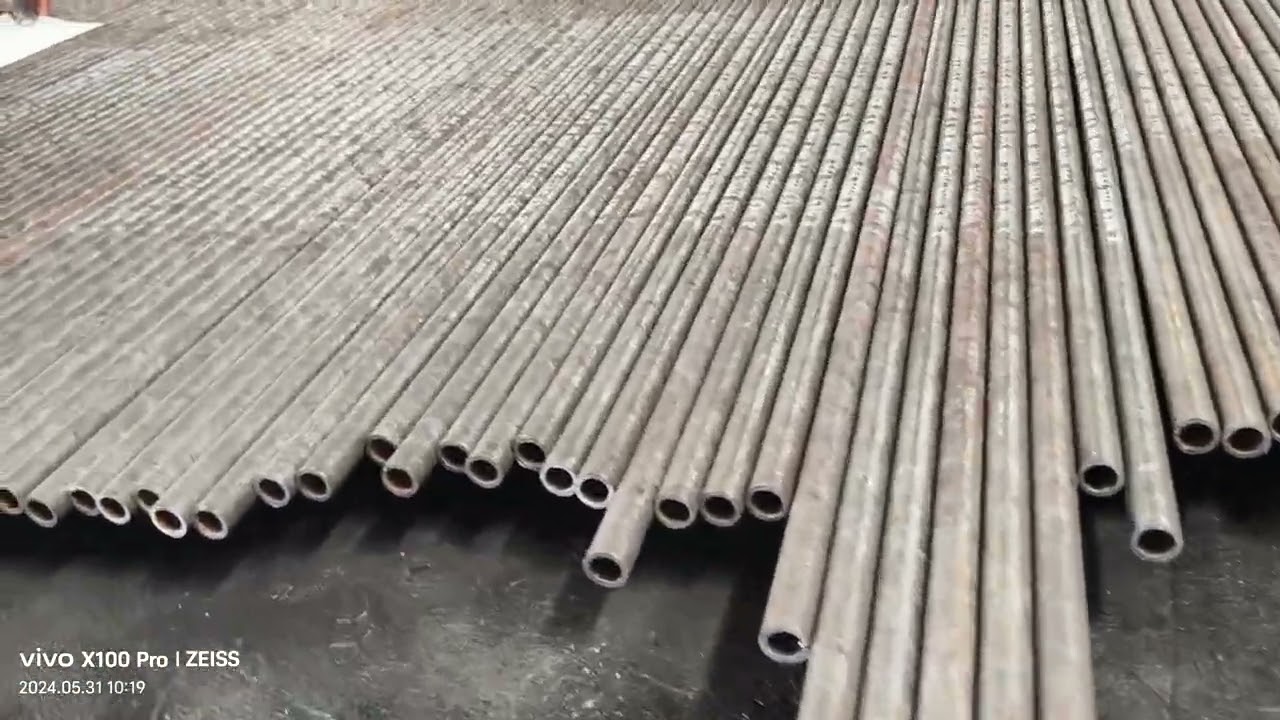ASTM A106 seamless steel pipes have become a significant element in industries where they need to offer high performance and at the same time are exposed to high pressures. These are most desired in segments such as the energy, oil-gas, and chemical industries since conditions such as temperature, pressure, or mechanical stress are significant here. Another important characteristic that distinguishes ASTM A106 pipes is their chemical composition. The pipes’ chemical composition determines their mechanical properties, as well as their corrosion resistance and overall quality. Tuspipe guarantees a consistent product that can withstand the high standards of the industrial sector due to the right combination of elements in each pipe. This article aims to explain the Chemical Composition (%) of ASTM A106.
Exploring the Elements of the Chemical Composition of ASTM A106 Pipe
The ASTM A106 specification includes the smooth-bore carbon steel pipes aimed for high-temperature service; one of the important considerations is chemical composition. Carbon content within ASTM A106 pipes encompasses carbon, manganese, phosphorus, sulfur, and silicon. In essence, each of the ingredients leads to pipe characteristics that a specific combination of factors provides stringent performance conditions for these pipes. For instance, carbon is the main hardening constituent in steel making ASTM A106 pipes strong. But carbon in excess weakens the steel making it brittle and thus is controlled to provide the right combination of hardness and ductility. Manganese and silicon, on the other hand, improve the material’s strength and high-temperature service capabilities. Phosphorus and sulfur content is also low to avoid the formation of defects that can undermine the pipe’s integrity. Through these aspects, Tuspipe manufactures ASTM A106 pipes of high-quality standards.
Carbon
Carbon is one of the major contents of ASTM A106 pipes since it determines the material’s increased hardness, tensile strength, and pressure class. The higher the carbon content, the higher the strength, and, therefore, the pipe has a higher capability to resist deformation. But carbon must be kept under control; when too much carbon is there, there is a loss in ductility, and in simple words, it breaks if bent. The amount of carbon in ASTM A 106 pipes is restricted so much that the pipes are bound to resist high stresses at failure. Besides strengthening, carbon also has a function in the wear resistance of the pipe. In industries where pipes undergo a constant flow of liquids or gases, higher resistance to wear leads to longer pipe’s useful life and less maintenance frequencies. Carbon content control in Tuspipe makes each ASTM A106 pipe have the right combination of strength, toughness, and flexibility to withstand high pressure.
Manganese and Silicon
Manganese and Silicon are some of the contents within ASTM A106, each of which contributes towards the strength of the pipe and has toughness for durability. On many occasions, Manganese plays the accelerator in the way that steel gains its strengths and still improves the ductility of this very steel. This improvement by Manganese through ductility happens to be very important towards these pipes being bent into specific curves and all or some such bending might create cracks or more appropriately break these pipes that way. Manganese also helps in deoxidation which shines structural imperfections in the steel in the process of production. While silicon enhances the thermal conductivity and stability of the pipe. Some pipes are used in temperate or even high-temperature areas like power plants, and refineries, therefore pipes must be able to withstand high temperatures. Silicon also improves this characteristic so that ASTM A106 pipes do not lose or corrode when exposed to high temperatures.
Phosphorus and Sulfur
Phosphorus can make steel brittle, especially at low temperatures, this is dangerous in areas where temperature fluctuates. Sulfur also tends to lessen the ductility of steel, making the product incapable of handling much bending and pressure used in the construction region. For these reasons, Tuspipe maintains phosphorus and sulfur content to the lowest levels possible, by ASTM A106. By restricting these factors, ASTM A106 pipes are more suitable in various service environments including low-temperature services and high-pressure services.
Conclusion
The chemical composition of ASTM A106 pipes is crucial in defining their mechanical properties and their ability to withstand high-temperature services. By choosing the right carbon, manganese, silicon, phosphorus, and sulfur content in its manufacturing process, Tuspipe delivers ASTM A106 pipes that can withstand high performance and give outstanding results. This tight control of chemical composition means that the pipes are designed to withstand high stress and temperature, ideal for the harsh confines of industry. As a value-added to its production line, quality assurance is seen at Tuspipe affording every ASTM A106 pipe the necessary endurance and performance demanded for application in vital areas in industries.

Stan
Stan is a lifestyle blogger and freelance writer. He loves exploring new places, trying out different cuisines, and writing about his experiences. He's also a fitness enthusiast and enjoys practicing yoga and weightlifting.